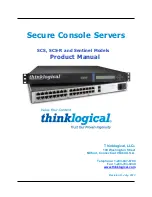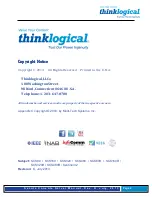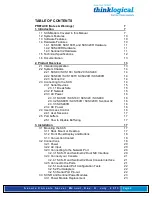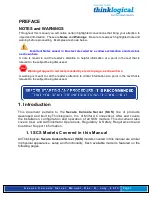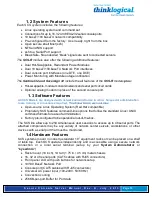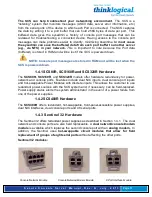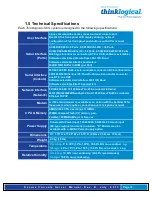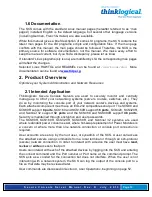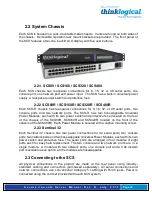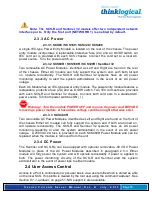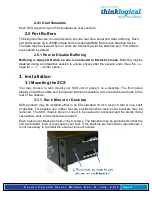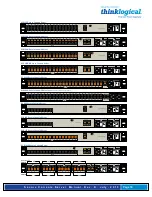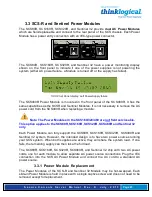
S e c u r e C o n s o l e S e r v e r M a n u a l , R e v . K , J u l y , 2 0 1 3
Page 13
1.6 Documentation
The SCS comes with the standard Linux manual pages (hereafter referred to as “man
pages”) installed; English is the default language, but several other language versions
(including German, French & Italian) are also available.
While this manual gives a brief description of some LSI programs, the SCS contains the
latest man pages for the LSI programs, scripts and configuration files. If the man page
conflicts with this manual, the man page should be followed. Therefore, the SCS is the
primary source for software documentation, not the manual. We make every effort to
keep the manual current, but if you find a discrepancy, please let us know.
If ‘standard’ Linux programs (sty is one) are modified by LSI, the corresponding man pages
will reflect the changes.
Selected Linux HOWTOs and READMEs can be found at
/usr/local/doc
. More
documentation can be found at
www.tldp.org
.
2. Product Overview
Optimize your System Administration and Network Resources
2.1 Intended Application
Thinklogical
®
Secure Console Servers are used to securely monitor and centrally
manage up to 48 of your networking systems (servers, routers, switches, etc.). They
do so by monitoring the console port of your network center’s devices and systems.
Each attached component must have an EIA-232 compatible serial port. The SCS80 and
SCS80R support 8 ports, SCS160 and SCS160R support 16 ports, SCS320, SCS320R,
and Sentinel 32 support 32 ports and the SCS480 and SCS480R support 48 ports.
Security is maintained through encryption and user passwords.
The SCS80R, SCS160R, SCS320R, SCS480R, and Sentinel 32 systems are used
where redundant power concerns exist, where hot-swap replacement of Power Modules is
a concern or where more than one network connection or console port connection is
required.
User accounts are set up by the root user, or sysadmin of the SCS. A user can access
the attached servers using commands from a local terminal or through an ssh-protocol
(secure) network connection. In order to interact with a device the user must have read,
review or write access to that port.
Users can interact with each of the attached devices by logging into the SCS and entering
the connect command and the Port number or Port name at the command prompt. The
SCS acts as a conduit for the connection but does not interfere. When the user is not
interacting with a network system, the SCS can log the output of the console port to a
file so that data may be reviewed later.
User commands are discussed in Section 9, User Operations, beginning on page 52.

